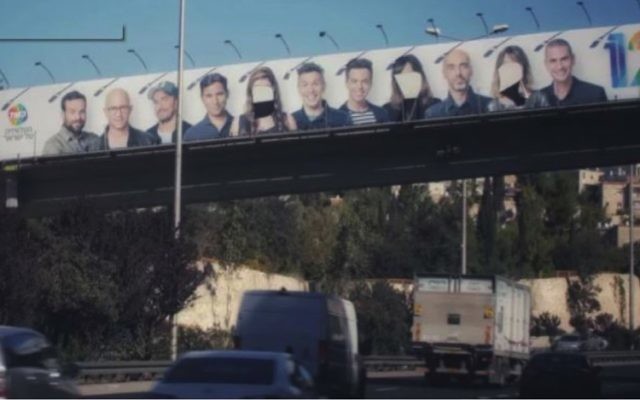Tensions Rise Over Women in Public Spaces
For decades, ultra-Orthodox Jews in Israel have protested secular definitions of how males and females should act in public spaces.

On Wednesday, Oct. 25, a unique act of vandalism took place in Jerusalem. On a large banner ad that displayed the cast of the popular Israeli satire “Eretz Nehederet,” all the female cast members’ faces had been torn off.
What the deputy mayor of Jerusalem called the work of extremist Jews represents a greater tension. For decades, ultra-Orthodox Jews in Israel have loudly protested secular definitions of how males and females should act and be seen in Israeli public spaces.
In the late 1950s, a time when secular, socialist values dominated Israeli culture and society, ultra-Orthodox dissent over men and women sharing public spaces was prominent.
In a famous case, the ultra-Orthodox community protested a public swimming pool in Jerusalem that allowed men and women to swim together. The rabbinate removed kosher seals from hotels owned by the pool’s builders, and massive protest marches were staged in Jerusalem.
In an early solution to the loud minority’s views on dictating the interactions of men and women in public spaces, the pool was sold to kibbutzim associated with the Histadrut (Israeli labor federation).
As time passed and the ultra-Orthodox community in Israel grew (today roughly 11 percent of Israel’s population), tensions over this issue increased. Ultra-Orthodox groups in Jerusalem and surrounding communities became more boisterously opposed to secular understandings of women in public spaces.
In a 2011 case, Naama Margolese, an 8-year-old Modern Orthodox girl, was regularly berated in the streets of her town, Beit Shemesh. According to reports, ultra-Orthodox men would spit on her and call her a prostitute because her modest dress did not align with their stricter standards of modesty for women and girls.
Naama’s story highlighted religious conflicts in certain sections of Beit Shemesh that became national news; the story sparked widespread outrage. These conflicts included the appearance of signs asking women to dress modestly and walk on the other side of the street from certain synagogues, and a movement to separate men and women on public transportation was born.
Religious frictions in Beit Shemesh are emblematic of an increase of such cases throughout Israel.
According to Israel’s National Economic Council, the ultra-Orthodox population in Israel will increase to 20 percent the next 20 years. The strains between this population and the rest of Israeli society will inevitably increase.
As virulent tension between the ultra-Orthodox and the rest of Israeli society rises, there is an imperative for Israelis of all religious stripes to narrow the secular-religious divide. It threatens the societal fabric of the Jewish state more than the 1950s’ feared but unrealized divide between Jews of Ashkenazi and Middle Eastern origins.
Further Reading



comments